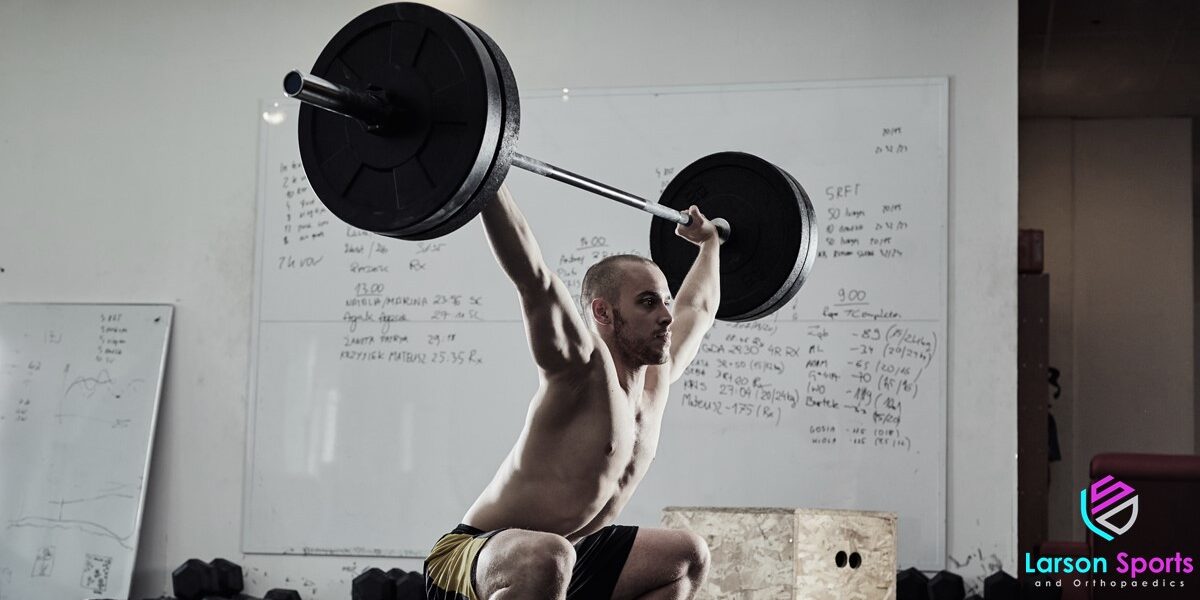I take care of hundreds of painful shoulder injuries every year. And I spend a lot of time in the gym. So I get to see all the mistakes people make while exercising and how it can mess up their shoulders. And I don’t want you to become one of those statistics! Fortunately, shoulder pain while lifting can be easy to fix if you take care of it early.
If you have pain when lifting weights, you shouldn’t ignore it. But it’s important to know what the problem is. Maybe your form is off. Or maybe you need to decrease your lifting volume. Simple corrections to your technique can help eliminate problems like impingement and tendinitis.
After more than a decade as a surgeon, I could totally bore you with details here. But instead, I’m just going to hit the highlights! The location of pain can be an easy way to start figuring it out, so check out the lists below to help identify the problem.

Dr. James Larson is an orthopedic surgeon specializing in sports medicine and arthroscopic surgery. He also holds a CF-L1 certificate and is a Certified BFR Specialist. He supports weight training and high-intensity exercise throughout the lifespan. He started LSO to keep more people moving better, longer.
TOPICS
Click these links to go directly to the information you need.
- Causes of Shoulder Pain, By Location
- Fix Your Form
- Exercises to Stop Shoulder Pain
- Stretches For Shoulder Mobility
- Shoulder Pain By Cause
Causes of Shoulder Pain By Location
You’ll see a bit of overlap here. Because everyone is different, the same problem can cause slightly different symptoms in different people. And remember: your shoulder kinda sucks at telling you exactly where the problem is. It’s just like how your left arm hurts when you are having a heart attack. So be sure to have a pro take a look before deciding exactly what you have going on. Even we can be fooled!
Pain in the Front of The Shoulder
Pain in the front of the shoulder tends to indicate a deeper source of the pain. It’s usually a problem inside the joint itself. Either that or one of the superficial structures in front.
Pain in the Back of The Shoulder
Pain in the back of the shoulder is much more likely to be a sprain, strain, or some other problem that doesn’t need surgery.
Pain on Top: From Neck To Shoulder
Pain from the neck to the shoulder often comes from muscle strains or nerve injuries. But problems at the AC joint are the next most common cause
Pain in The Side Of The Shoulder
Pain on the side of the shoulder is very common, and it’s most often due to rotator cuff issues. The pain can sometimes go all the way down to the elbow, but doesn’t usually go past that. There are several other causes though.
Fix Your Form To Stop Shoulder Pain
There are a lot of ways to jack up your shoulder in the gym. Kipping before your shoulders are ready is a major one. I’m fine with kipping during your gymnastic moves. But you need to have shoulder mobility beyond the normal range and strong shoulder stabilizers before trying it. Kipping is a way to speed up pull ups, not a way to skip the work required to do a strict pull up. A couple other common-problem lifts are highlighted below.
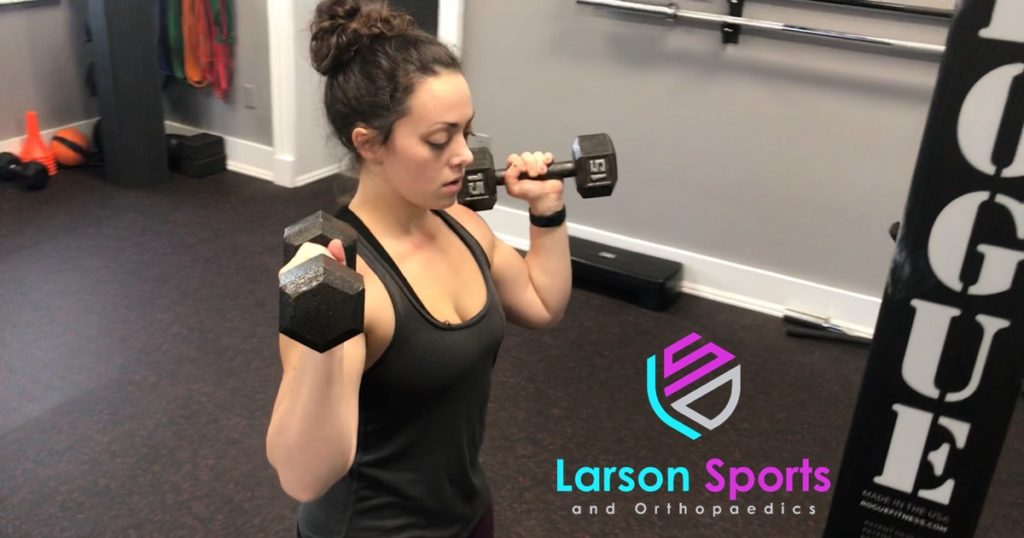
Shoulder position is the most important thing when performing overhead press. Keep them at a 30 degree angle instead of straight out at the side. Click HERE for more details.
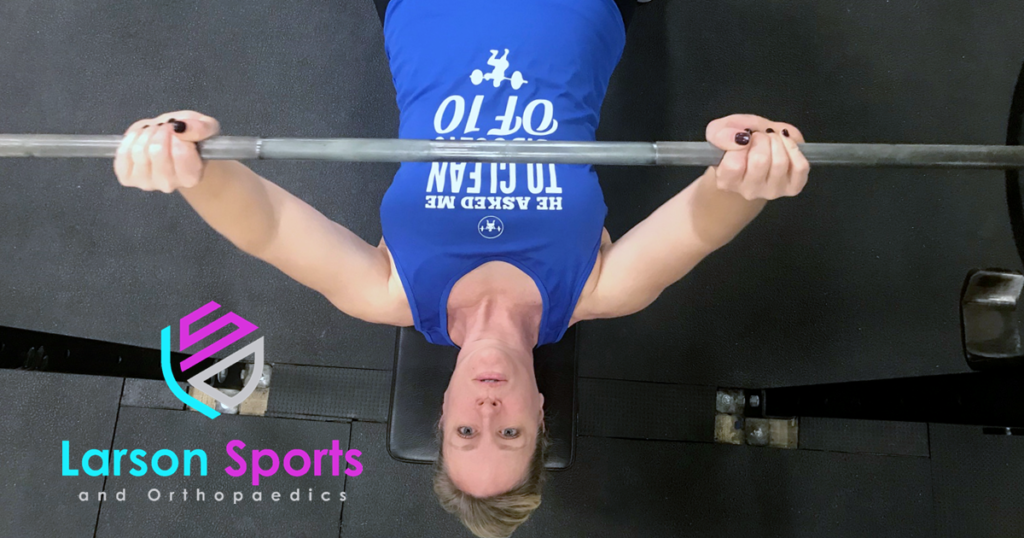
Shoulder position is even more important during bench press. But it is a full body lift, and if you are only using the upper body, you’re setting yourself up for pain. Check out our complete post HERE for more.
Exercises To Stop Shoulder Pain
Stop the heavy lifts and try these for a couple of weeks to rehab the shoulder if you are having some pain. Also, I love including these in your warmup to stop shoulder issues before they start!
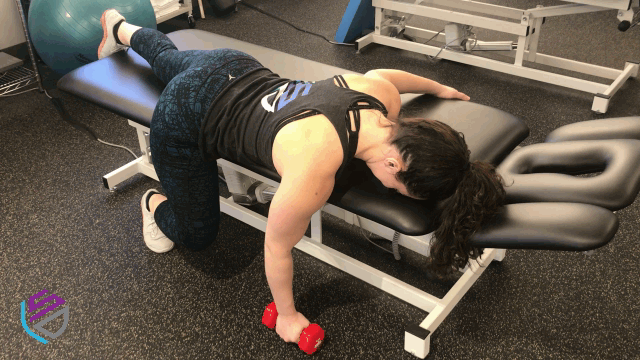
Reverse Flys
One of the best exercises for both the rotator cuff and scapula stabilizers.
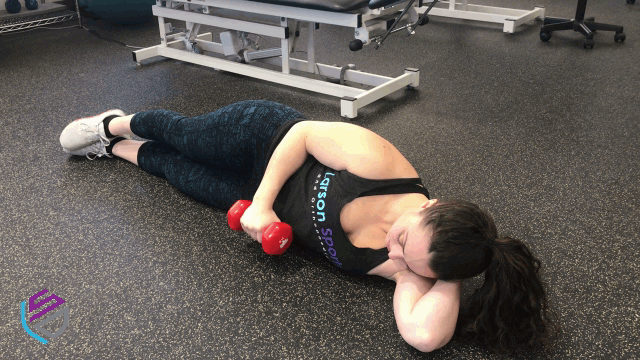
Dumbbell E.R.
Use small dumbbells (2-5 lbs) to strengthen the rotator cuff with these external rotations
Stretches For Shoulder Mobility
Keeping your shoulders nice and loose is a great way to prevent some of the most common shoulder problems. Use these stretches after your workout to keep the shoulders mobile and healthy!
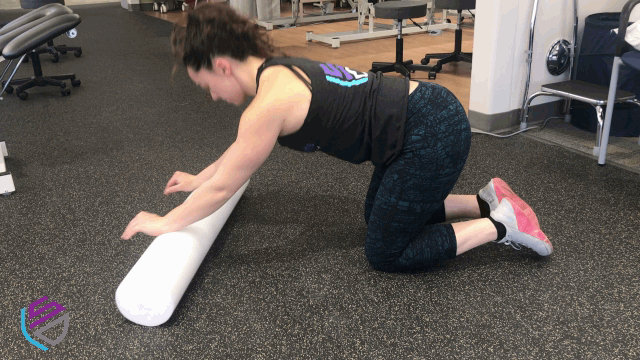
Child’s Pose
Use a foam roller to pass through and get maximum shoulder stretch!
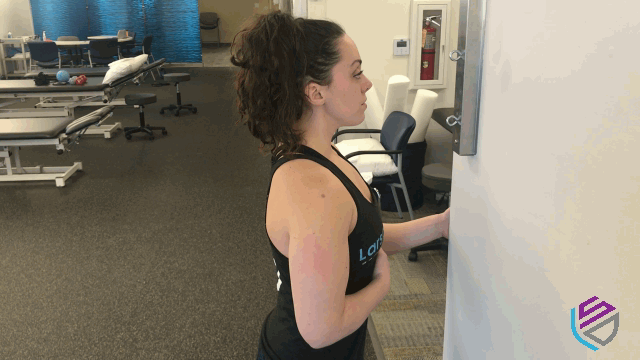
E.R. Stretch
This simple external rotation stretch will help keep you shoulder’s and chest open during lifts.
Shoulder Pain Due To Overuse
- Rotator Cuff Tendinitis, Bursitis, and Subacromial Impingement
- Distal Clavicle Osteolysis
- Internal Impingement
- Biceps Tendinitis
Subacromial Impingement, Cuff Tendinitis, and Bursitis
What is it? There are three terms here that are often talked about separately but are really part of the same problem: Cuff Tendinitis, Bursitis, and Subacromial Impingement. Subacromial Impingement is when the rotator cuff tendon gets squished under the acromion, leading to cuff tendonitis and inflaming the bursa. It’s a downward cycle of inflammation leading to poor function, causing more inflammation, and so on.
What are the symptoms? Usually a sharp pain in the shoulder when you put your arm overhead. Sometimes it’s worse when you are bringing the arm down. It can ache at night, especially toward the side of the shoulder. There may be some crunching. And you have sharp pain with exercise.
How is it treated? I personally treat this problem by trying to break both sides of the downward cycle. A shot of anti-inflammatories or steroids will reduce the pain and inflammation. And physical therapy will restore good function. Oh and also, stop abusing the shoulder. I once had a patient doing 300 push-ups a day, every day! There is nothing I can do to fix your shoulder if you don’t stop overworking it!
Reference Article SubA Impingement
Distal Clavicle Osteolysis
What is it? Essentially, you exercise so much that you crush the end of your collar bone. Your body tries to heal, but you don’t stop working out. So eventually, the body just gives up and starts to dissolve the end of the bone instead!
What are the symptoms? Usually aching pain in the top of the shoulder that is made worse by any upper body exercise. It will hurt at night, and when you cross your arm over your body, like when you put on your seatbelt.
How is it treated? The best way to diagnose this is with an X-ray. The primary treatment is rest, which is successful most of the time. An injection of steroids or anti-inflammatories can help out a lot too. And sometimes we just do arthroscopic surgery to shave away the end of the collarbone and be done with it. This last option often appeals to professionals and dedicated fitness athletes.
Internal Impingement
What is it? Internal Impingement is when the inside of the rotator cuff and the posterior labrum crush against each other during overhead exercises or sports like baseball and volleyball. It can lead to tears of the cuff and labrum if not addressed early. It is frequently caused by insufficient mobility to the shoulder joint or scapula, leading to a nutcracker effect as people try to force the shoulder into excessive overhead motion.
What are the symptoms? There is usually a sharp pain in the back of the shoulder during overhead activities such as kipping pullups, throwing a ball, or overhead press. If you’ve developed a tear of the cuff or labrum, you may have continual aching in between workout sessions.
How is it treated? This is a problem that is best corrected with physical therapy. And fix your form! Check out our articles about overhead press and bench press technique for simple fixes. Surgery is typically only needed if you’ve developed a tear in the cuff or labrum because you ignored the pain and just kept working out. I know we’ve NEVER done that before /s!
Biceps Tendinitis
What is it? The biceps muscle has two tendons near the shoulder, and a single one down at the elbow. The two tendons at the shoulder are called the Long Head and the Short Head. The long head travels through a tunnel in the rotator cuff and it takes a 90-degree turn before attaching to the socket. It is easy to irritate, especially if the cuff is weak and that leads to biceps tendinitis.
What are the symptoms? Biceps tendinitis usually presents as pain in the front of the shoulder. It is most painful with curls, pull-ups, or holding things out in front of you.
How is it treated? I find that this rarely needs surgery. Usually one or two injections or cortisone or toradol into the sheath around the biceps tendon will relieve the pain. But physical therapy to strengthen the rotator cuff is necessary to stop it from coming back. Because an inflamed biceps tendon is usually a sign of a weak cuff.
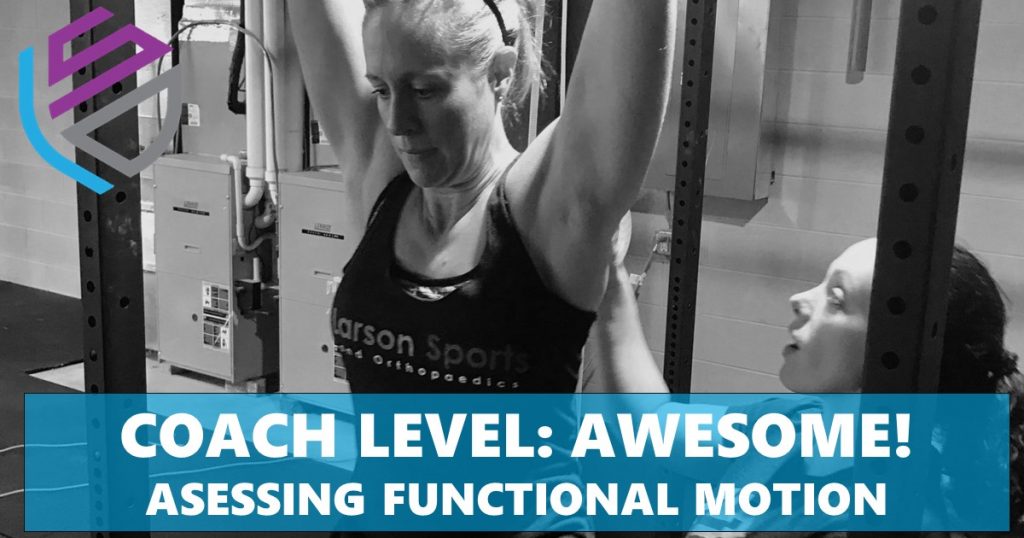
Do you have difficulty with overhead squats? Our Movement Assessment can help you reach your goals!
Shoulder Pain: Rips And Tears
- Rotator Cuff Tears
- Labrum Tears
- Shoulder Instability
Rotator Cuff Tears
What is it? The rotator cuff is a small set of muscles that help to move and stabilize the shoulder. The cuff is unfortunately prone to injury, with nearly 70% of people having some degree of tearing on autopsy. Tears can go part of the way through; a partial tear. Or they can perforate all the way through, also called full-thickness or complete.
What are the symptoms? These usually cause pain in the side of the shoulder. It’s typically painful when raising the arm or lowering it, especially when passing the mid horizontal position. There is usually pain at night. Oddly enough it usually hurts more lifting a light object like a coffee cup than it does when lifting a heavier object.
How is it treated? Full-thickness or “complete” rotator cuff tears generally need surgery. On the other hand, partial cuff tears can respond well to physical therapy and injections. But if conservative treatment doesn’t fix the problem, partial tears can be fixed surgically. Fortunately, surgery for partial rotator cuff tears has become much better. The newest surgery for partial tears relies on regenerative medicine. That means you are only in a sling for two days and back to normal as quickly as 8-10 weeks.
Labrum Tears
What is it? The labrum is a ring of cartilage around the socket of the shoulder. It works like the bumpers you put in the gutters of a bowling alley for kids: it keeps the ball bouncing in the center! Labrum Tears can be the result of chronic wear and tear, like years of heavy bench press. Of course, they can also come from acute injuries, like trying to do kipping pull-ups before you are ready.
What are the symptoms? Labrum tears frequently hurt deep in the front or back of the shoulder. They can cause the shoulder to feel like it’s slipping out of place. Smaller tears only hurt during athletics or exercise. But larger tears tend to ache all the time too.
How is it treated? Smaller labrum tears can be treated with therapy. But larger tears often require surgery. This is usually done by arthroscopy, and the labrum is sewn back onto the socket with sutures and anchors.
Shoulder Instability
What is it? Shoulder instability is when you dislocate the shoulder. But when we talk about pain with weight training, its usually not that dramatic. Typically this is people who are just “double jointed” or have super stretchy joints. And they can slide part way out of joint during heavy lifting causing pain.
What are the symptoms? If your shoulder pops out of joint, you will totally know it. Of course, It’s not that dramatic with mild instability. In that case, you feel the shoulder slip with heavy lifts, especially overhead ones like snatch.
How is it treated? While we can do surgery to tighten the ligaments in your shoulder, I really try to avoid it. It’s possible to end up too stiff. And on the other hand they have a tendency to stretch out over time. So the main course of treatment here is to work aggressively on rotator cuff strengthening, since it’s main job is to keep the shoulder stable.
Arthritis
- Shoulder Arthritis
Shoulder Arthritis
What is it? Arthritis is when you wear out all the tissue covering the ball and socket of your shoulder joint. When the cartilage is only partially damaged, we call it chondrosis. It’s the result of wear and tear over years of lifting, work, or athletic activities.
What are the symptoms? It causes a deep toothache pain with grinding in the shoulder. You’ll notice decreased motion. The pain will usually be fairly constant but worse with activity.
How is it treated? Regenerative medicine techniques like PRP, stem cells, and amniotic fluid can help to relieve pain for a long time. But eventually, you may need a shoulder replacement. Don’t worry though, with modern techniques you can still keep working out even after a shoulder replacement. Check out my collaborative post with Dr. Geringer and Dr. Steele for more information!
Nerve Compression
- T4 Syndrome
- Radiculopathy
T4 syndrome
What is it? T4 syndrome occurs when the nerves are compressed in the upper part of the back. These nerves usually help regulate blood pressure and other subconscious functions. But when compressed they can cause pain.
What are the symptoms? Pain usually starts between the shoulder blades but can run up the neck or into the shoulder and down the arm. It can shoot straight through into the chest and make it difficult to breathe. It can cause tingling into the hand and is worse after exercises like rowing or pullups.
How is it treated? This is best treated with physical therapy, and sometimes chiropractic manipulation. The goal is to relax the muscles around the shoulder blade and prevent them from spasming around the nerves.
Radiculopathy
What is it? Another common cause of shoulder pain is actually related to the neck. This occurs when spastic neck muscles or bulging discs put pressure on a nerve that tracked down into your shoulder or neck.
What are the symptoms? No matter where a nerve is compressed, you’ll feel pain all along its entire length. The nerves coming out of your neck run all the way down the arm. So if a nerve in your neck is squished, it can cause pain, numbness, and tingling into the shoulder and down the arm. It’s sort of like sciatica, but in your arm.
How is it treated? Muscle relaxers, oral prednisone pills, and stretching are the best ways to handle this initially. A key to stopping this is making sure you have enough shoulder motion to have proper form in overhead exercises. Otherwise you transfer that strain to your spine, leading to problems like this. Surgery is usually reserved for herniated discs that don’t respond to other measures.
Reference Article Radiculopathy
For More Help
If you need more help, feel free to contact my office for an appointment and a complete evaluation.

